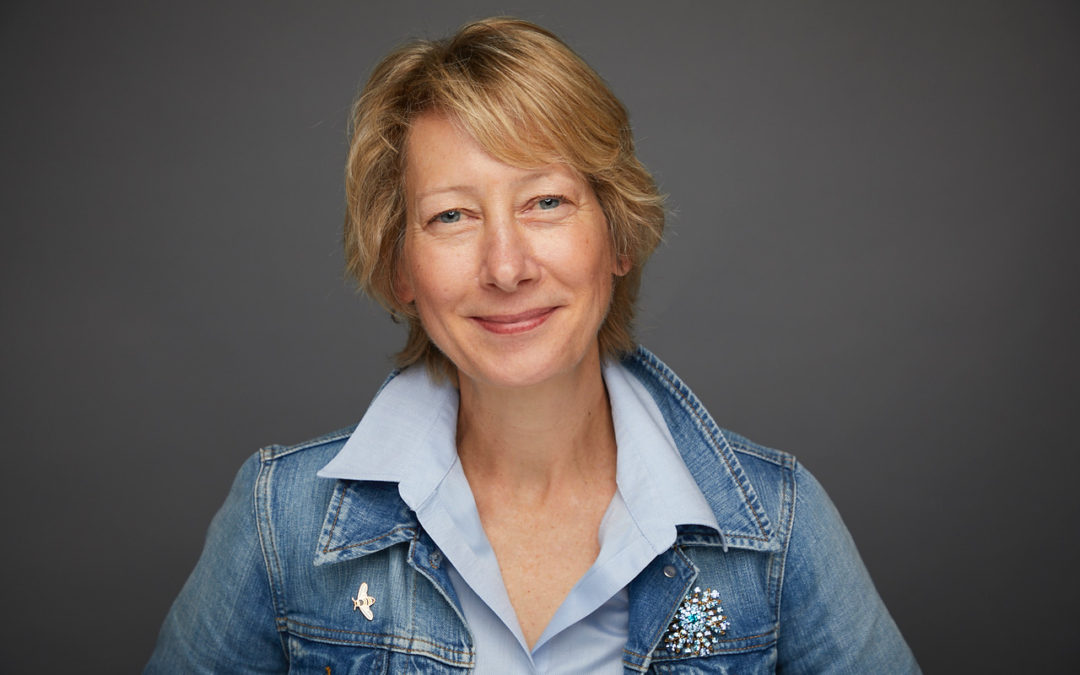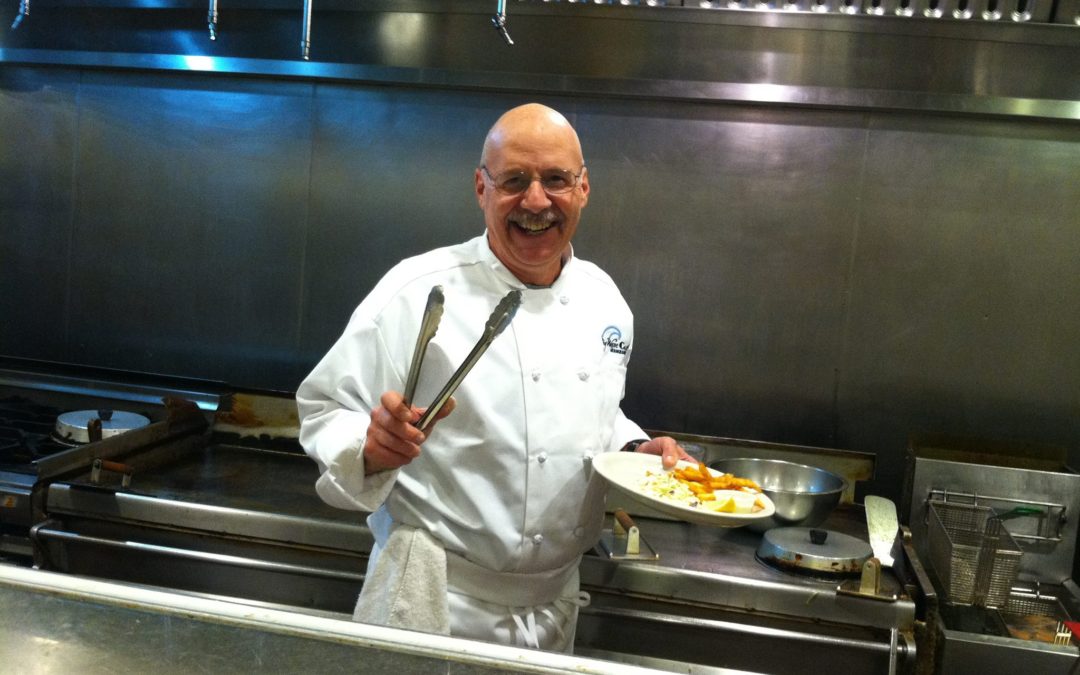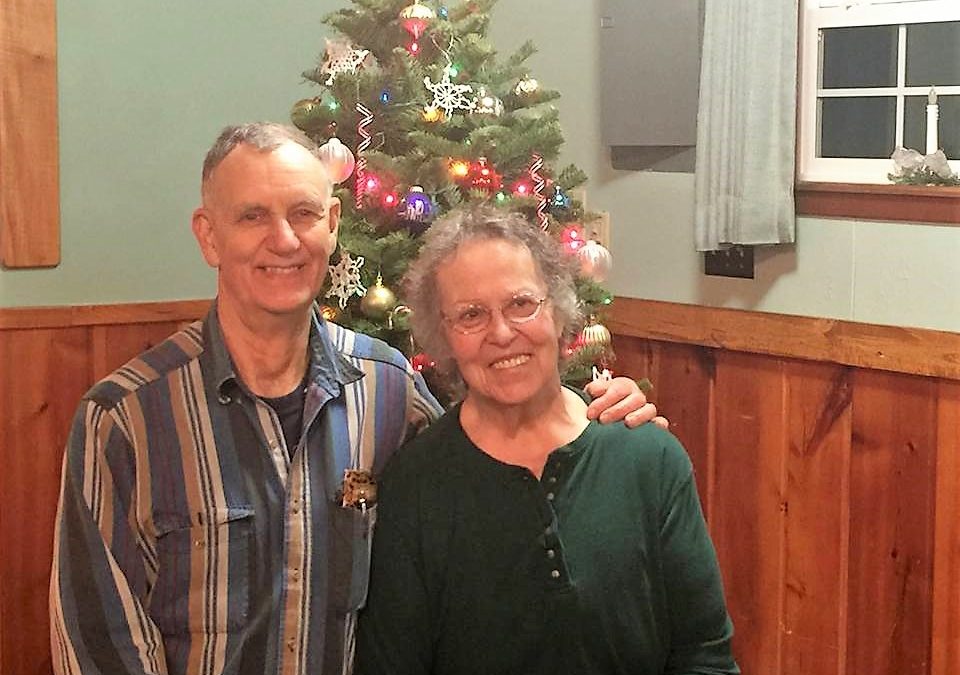
by Michelle | Mar 27, 2019 | Eat Well
Thanks to a sponsorship by Tillamook County Wellness partner, Oregon Dairy & Nutrition Council, we will periodically feature articles and recipes from Judy Barbe, author, columnist and nutrition expert. As a registered dietitian nutritionist and food enthusiast, Judy offers realistic food solutions to help people “live their best.” Judy was a featured speaker for the Tillamook County “Year of Wellness” in 2016.
Meal Planning 101: Scan, Plan & Cook
By Judy Barbe RDN, LiveBest
It’s 5 o’clock. Somewhere.
That means it’s time to kick back and relax. Right?
Somewhere. But not after work when the kids want attention and the dog demands even more. And you’re trying to get dinner on the table.
If you want to control chaos, save time and money, and reduce wasted food, meal planning is your ticket. Here are three steps to get you going.
- Scan
Before you grocery shop, scan your cupboards, fridge and freezer. Are there foods on hand you can use to start a recipe? Tomatoes (canned or fresh) can be simmered with olive oil and garlic to make a pasta sauce. If you have a can of olives, tuna or clams, add those. Do you have vegetables you can repurpose into a salad, soup, or salsa?
- Plan
Plan at least 3 meals you can make this week. Check the grocery promotions to see what’s on sale and what’s in season. Seasonal fresh fruit and vegetables taste best and cost less. Ask the store produce manager to learn what’s in season. Plain frozen and canned fruits and vegetables are also good options. Keep high-fiber foods in mind. Fiber is found in plant foods such as beans, seeds, nuts, whole grains, fruits and vegetables.
Think about how you can use what you’re cooking in another meal. Cooking ground beef or turkey? Cook extra and freeze for another meal. Baking salmon? Save some for a salad with lettuce, avocado, cucumber and orange slices. Cooking quinoa? Make extra to add to soups, chili, or toss with black beans, corn, mango, green chiles and a vinaigrette.
- Cook
Set aside a power hour for meal prep that will last all week.
- Set the oven to 350° F. to bake nuts, vegetables, or chicken. Potatoes can be reheated later and topped with broccoli and cheese or chili. Add chicken to salads or casseroles.
- While the oven is heating, chop vegetables for side dishes, snacks and lunches. Keep some raw and store them at eye level, in a clear container in the fridge. When they’re the first things you see, you’re more likely to eat them. Toss some with 1- 2 teaspoons of olive oil, spread on a baking sheet and bake until just tender. Add to tacos, pizza, salads, or a frittata.
- Simmer a pot of soup. Split pea soup, Peruvian Quinoa or white bean chicken chili can give you a night or two of meals.
- Hard cook eggs. Perfect for breakfast, lunches, and snacks. Add in salads, such as canned beets, toasted walnuts and blue cheese crumbles or curry egg salad.
- Cook a whole grain such as quinoa, bulgur, or wheat berries. This is an easy way to boost fiber and protein in salads or stuff a pepper. Yogurt and fruit are another way to enjoy whole grains.
- Blend bean dip or hummus for a high-fiber snack that’s ready when hunger strikes. Pack it with veggies and whole-grain crackers for lunch.
As you finish, pack foods in airtight containers, label and place them in the fridge or freezer. The more you plan, the easier the routine becomes. You’ll also appreciate when the 5 o’clock rush is more like “I’ve got this!”
Registered dietitian Judy Barbe specializes in realistic food solutions. She is author of Your 6-Week Guide to LiveBest: Simple Solutions for Fresh Food & Well-Being. Visit her website www.LiveBest.info.

by Guest | Mar 7, 2019 | Eat Well
The new year is not too far behind us and, already, the annual “eat healthy” resolution for many is put on the back burner, especially if you want to eat out. That’s a common dilemma for those that have food sensitivities, or adhere to certain eating regimens, or are simply wanting to eat healthy – restaurants are often “off-limits”. Big Wave Café aims to feed everyone, and their new menu and daily specials reflect that commitment.
“Several months ago, we adjusted our menu and designated dishes as gluten free, vegetarian and vegan,” said chef/owner Brian Williams. “We were getting lots of these requests,” he continued, “We provide the foods our patrons want, and it’s especially important to provide healthy options, that are more than a salad.” Williams doesn’t just talk-the-talk, “I’ve been focusing my own food choices on healthier options, and you just feel better.”
Nightly specials at Big Wave Café include a seasonal veggie rice bowl that’s a feast for all the senses. A rainbow of seasonal vegetables which in January includes red, yellow and green bell peppers, broccolini, butternut squash, carrots and Brussels sprouts are lightly sautéed in olive oil, presented over steamed white rice with black beans and topped with a local Bennett Family Farms egg. “We are breaking the barrier for folks that want to dine out and eat healthy,” said Williams.
A big part of healthy eating is freshness and seasonality. Big Wave Café’s menu and specials reflect the best ingredients, locally sourced, and served in ways that showcase the flavors of the foods. The Big Wave Café Mission states: Food at the Oregon Coast is not only a necessity, but also a culture. For this reason, our food is not prepared in advance but instead in the moment that you order. We strive to use only fresh ingredients, and therefore it may take longer for us to serve your meal.
Looking for a delicious meal at a local restaurant that’s healthy too is easy at Big Wave Café. Join them for lunch or dinner 11 am to 9 pm, Friday through Tuesday (closed Wednesdays and Thursdays) at the entrance to the Manzanita, just off Highway 101 at 822 Laneda Avenue. See their complete menu and more at www.oregonsbigwavecafe.com.

by Guest | Feb 28, 2019 | Eat Well
Photo credit: Broken Banjo Photography
With the bounty of the farmers market season just around the corner, we are all craving the fresh berries and vegetables that will soon be abundant, but those delicious treats can be hard to access for community members who are food insecure. In Oregon, one in six community members experience hunger. To help make local foods more affordable to all, our community, like many others across the nation, has developed SNAP match incentive programs at area farmers markets. SNAP, or Supplemental Nutrition Assistance Program, was formerly called food stamps in decades past.
In Tillamook County, for the past eight years Food Roots has been working with area farmers markets to administer SNAP matching programs, rebranded Double up Food Bucks (DUFB) in 2016. DUFB’s works by incentivizing SNAP shoppers to spend their federal benefit dollars on nutritious locally produced foods available in our communities, and benefiting our farmers. For every dollar that a SNAP participant spends at a local farmers market they receive a one to one match, up to $10.00. These matching funds can be spent on fruits and vegetables, mushrooms, dry beans and fresh herbs.
Through increased engagement at farmers markets, SNAP shoppers are seeing that it’s not more expensive to purchase local food. 77% of our surveyed program participants over the past three years say that produce at the markets is equal in price or less expensive than the grocery store. Spending money at local businesses, including with small farms through direct to consumer markets helps our community flourish.
Local economic growth and health is a pillar of this program. With every federal dollar that is spent locally, $1.79 in economic activity is generated in our community, helping our local farmers increase their bottom line, pay their employees, and support other local businesses in turn, the multiplier effect. Food Roots is passionate about supporting our small farms and connecting our community to their products.
In 2019, Food Roots has the following goals for DUFB in Tillamook County:
- Expand this program to Food Roots’ year-round FarmTable storefront located at 113 Main Avenue in downtown Tillamook. This local food storefront already accepts SNAP payment, but with DUFB, we aim to increase the affordability of fresh produce past the 3-month farmers market season. FarmTable is open Monday-Friday, 9-5pm and makes available everything from fresh produce to meat, cheese, eggs, honey, canned tuna and more from Tillamook County farmers, ranchers and fishers.
- Food Roots aims to expand this program to include SNAP CSA’s. Community Supported Agriculture programs are membership boxes of fresh fruit and vegetables delivered to the FarmTable storefront weekly by a local family farm. Food Roots will accept SNAP benefits on behalf of the member and the farmer and aims to provide matching dollars to the member so that these boxes are more affordable, again, enabling SNAP families to stretch their food dollars on nutritious local food items while providing earned capital to our local farms. This program will pilot this year for a limited number of SNAP CSAs depending on funds raised.
- Continue to partner with Manzanita, Tillamook, Pacific City and Neskowin Farmers Markets to fundraise, increase program visibility and farmer participation, and provide technical support for Market Managers to administer SNAP and DUFB at these farmers markets.
“I am able to buy more fruits & veggies for my family – leading to more homemade meals & weight loss for the adults in the home.” “What a relief to be able to eat healthy. Thank you!”
Food Roots is fundraising to support all of this work! If you would like to make a donation to “pay it forward” for our food insecure families, please consider making a donation payable to Food Roots “RE: DUFB”, and mail it to P.O. Box 1275, Tillamook, OR 97141. We also accept donations online via: foodrootsnw.org/donation but please make sure to indicate that your donation is for DUFB!
A big thank you to all the community partners that help make this program possible: Tillamook Farmers Market, Manzanita Farmers Market, Pacific City Farmers Market, Neskowin Farmers Market, Adventist Health, Oregon Food Bank,Tillamook County Wellness, DHS, NorthWest Senior & Disability Services, Tillamook Ecumenical Council and local churches, Tillamook County Wellness, OSU Extension, and Tillamook County Community Health Centers.
Food Roots exists to grow a more robust food system on the north Oregon coast by engaging the community, supporting farmers and entrepreneurs, and improving access to local food. Visit our website today at www.foodrootsnw.org to learn more.

by Guest | Jan 17, 2019 | Eat Well
Making Health Affordable
Making healthy lifestyle changes are most often thought of as being too involved and very expensive, at least that was the belief of Bill and Bettie Lou Meador as they embarked on this new adventure. They had just signed up to attend CHIP, the Complete Health Improvement Program, held by Tillamook Regional Medical Center. Bill and Bettie Lou, at 78 and 80 respectively, were still very busy and active but could feel age creeping up on them via higher blood pressure, extra weight, a small stroke and stiffening joints.
Having read stories about CHIP participants in the hospital newsletter, Life and Health, they really wanted to see if they could afford the cost so they could reap the benefits. The program included a pre and post health screen including blood draw, daily 30-minute video teaching how lifestyle changes bring improvement in chronic conditions, 18 evening meals, 2 breakfasts and cooking demonstrations. In partnership with the YMCA, participants have free use of their facilities for 3 months to encourage development of a regular exercise habit. It seemed beyond their financial means to be able to pay for all of this.
In discussion with Ginny Gabel, the CHIP facilitator they learned the many options available to cut the cost enabling them to attend. So a financial plan was set up, they paid the discounted agreed-upon fee and got started. Each week they set goals, began walking more deliberately, tried new healthier recipes and ate and ate!
“The food was delicious” reports Bettie Lou,“ and through the cooking demonstrations by Janice Wolk, RD we learned how to save money by cooking healthier. I have been a cook for many years but there was still so much I learned.”
After the second week, Bettie Lou came in and handed Ginny a small check and said that it should be applied to the cost of the program. Each week thereafter she handed in another small check to be applied to her program fees. The last night of the program she brought one more check and in amazement, Ginny asked Bettie Lou, “Where has this money come from? Do you realize that you have completely covered the full couple-cost of the program and you won’t need the discount and scholarship you were offered?”
Bettie Lou smiled proudly, “Yes, I know. This is the money I saved each week from the meals we ate each night and the leftovers you sent home with us. I also saved money from my grocery shopping because I am no longer buying soda, chips, candy and snacks, packaged & processed foods, or cuts of meat. I have changed to fresh produce, beans, rice, whole grain foods and therefore saved enough to pay the full price for CHIP. It took some money to stock my kitchen at first, but I never would have believed that eating healthy would benefit my pocketbook so much.”
CHIP begins Jan 21 – Feb 28, 2019. To find out more about how CHIP can help you find Proven Results and Priceless Benefits contact Ginny Gabel, 503-815-2270 or gabelgl@ah.org.

by Michelle | Dec 6, 2018 | Eat Well, Recipes
By Dana Zia, The Golightly Gourmet
“I think it is more important to have fun and spend time with my guests at parties.” The Barefoot Contessa
The festive party season has officially begun. Lovely parties decked out in garlands of cedar and holly berries, beckon to us. Twinkling lights, laughter and rich holiday foods grace warm homes filled with party goers. We might even be so inspired by the season as to deck our own halls and have a party. Whatever the case, going to or having a party, there is a definite art to it. Here are some tips to help you avoid getting stressed out of your mistletoed mind and expanding your waist to Santa’s girth.
One of the key components of a stress-free holiday party is easy, healthy food. I know “easy” and “healthy” used in the same sentence with “holiday party” seems like an oxymoron, but it is possible. I assure you.
There are two festive dishes that you can serve at any party that will be received with big rosy smiles; the vegetable platter and the fruit and cheese platter. We’re not talking just any ole platter like you get from a grocery store. (Even those will do in a pinch) We are talking about an updated, healthy and sexy looking tray of merry, healthy foods! These trays are easy to put together and filled with goodness that we all need this time of year. They can even be elevated to art work, with little planning and prep. Oh, and they don’t require any cooking. Easy, healthy and delicious; check.
First off, when planning the platter of your choice, think textures and colors. Start by choosing an interesting platter to arrange it on. A large wooden cutting board or a bamboo tea tray are my favorite go-to containers. I have found some great platters at Good Will or other thrift stores that are interesting and affordable too.
Let’s start with the luscious fruit and cheese platters. Pick out an array of different cheeses; a hard one, a soft creamy one, a mild one and a pungent one. Choosing locally made cheeses adds even more interest to the tray or try making a cheese log for a kick. Tip: Let your cheeses come to room temperature for a few hours before serving as cheese tastes better that way.
Next, think fruit; colorful, different shapes, and the simpler the better. Choose fruits that are in season and are easy to pick up and eat. Grapes, apples and pear slices, figs and tangerines slices are good choices for this time of year. (To keep your pear and apple slices from turning brown, squeeze the juice of an orange over them and toss till well coated.)
Add some dried fruit, like cranberries and apricots, then some nuts roasted cashews and almonds are always good. Choose some sliced breads or crackers for the platter as well. I love nut crackers, like “Blue Diamond Nut Thins” because they are healthy, gluten-free and have great crunch.
Let’s talk vegetable platters, or in French, “crudités platter,” which are equally enjoyable to create. Once again, think colors and textures. Carrots of different colors, sliced in half lengthways, radicchio and Belgian endive cut into little scoops, cherry tomatoes, snow peas, lightly steamed green beans and asparagus, julienned bell peppers and celery make great choices. Make a dip for the vegetables that is sleek and different. Something like a “Green Goddess”, baba ganoush, or zesty orange hummus dip. (Recipe follows)
Now for the fun part, assembling your masterpiece. Allow your creative spirit to flow here. Pick some herbs, like sprigs of rosemary and sage, to arrange around the platter to add interest. Pine boughs that have been washed work too if you can’t get fresh herbs. Pomegranate seeds or dried cranberries sprinkled around the herbs make a lovely holiday theme.
You can use leaves from the garden to place under the cheese, fruit and veggies. Make sure they are non-poisonous and pesticide free first! Our native salal is a great one to use; completely edible and evergreen. (Holly and mistletoe are not edible, so don’t use them.) Then arrange the fruit and cheeses or the veggies in a fun and pleasing way. Use your imagination and most of all enjoy the process and the different flavors you are presenting. Your tray will be well visited! There are many people wishing to eat healthy foods this time of year. I wish you a healthy and (relatively) stress-free holiday season!
Zesty Orange Hummus
Adapted from Cooking Light. You can get all the spices, from your local grocery store, including Mother Nature’s in Manzanita. Great served with veggies or pita wedges.
½ onion roughly chopped
2-6 cloves of garlic
¼ cup of orange juice
2 tablespoons of rice vinegar
2 teaspoons of low sodium soy sauce
2 tablespoons of tahini (sesame paste)
1 tablespoon of dried parsley
¼ teaspoon of ground ginger
¼ teaspoon of ground coriander
¼ teaspoon of turmeric
½ teaspoon of cumin
½ teaspoon of smoked paprika
Or regular paprika
1 15 ounce can garbanzo beans (rinsed and drained)
Get down the old food processor or a blender on steroids. Add the onion and the garlic to the food processor then whirl until diced up. As the processor is running, add the rest of the ingredients, one at a time until well blended.
Serve sprinkled with smoked paprika, a drizzle of a really good olive oil and some holiday love.

by Michelle | Oct 25, 2018 | Eat Well, Recipes
Serves 5
INGREDIENTS
2.5 oz. cream cheese
6.5 oz. cheese, cheddar, yellow, reduced fat, shredded
1/3 cup yogurt, low-fat, plain
2 Tablespoons milk, 1% low-fat
20 crackers, whole grain, low-salt
INSTRUCTIONS
Place cream cheese and cheddar cheese in a food processor and blend until smooth.
Add yogurt and milk. Puree again until smooth.
Transfer dip to a serving bowl.
Serve with whole grain crackers.
Refrigerate leftovers.
NUTRITIONAL FACTS
Calories: 216, Total Fat: 12.40 g, Saturated Fat: 6.75 g, Cholesterol: 30.64 mg, Sodium: 360.65 mg, Calcium: 378.88 mg, Protein: 13.57 g, Carbohydrates: 13.43 g, Dietary Fiber: 1.68 g
Dietitian’s Tip: A fun way to get calcium, protein and whole grains.






